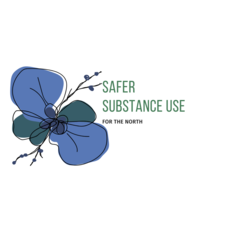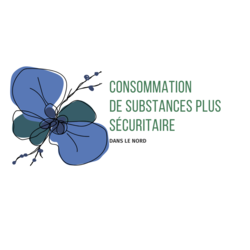Safer Substance Use for the North – Communications Toolkit for Mental Health and Addictions Service Providers
This Communications Toolkit was prepared by the Northern Addictions Task Team, a sub-group of the MHA Pandemic Response Committee of the OH North Pandemic Regional Steering Committee. It was developed for Health Service Providers (HSPs) across the north. The Toolkit provides the opportunity for HSPs to adapt resources to suit their individual community needs, embed information on where to access services, and utilize resource templates such as posters and suggested social media posts to address myths and outlines strategies for harm reduction and safer substance use during COVID-19.
Background
There has been a noted increase in overdoses and unsupported withdrawals within Northern Ontario, however it is unclear if this is COVID-19 related or if it is a seasonal trend. Business closures, border closures and social changes have led to decreased access to alcohol and disruptions to the drug supply.
With the reduction of services and/or the transition of services virtually throughout the region, this has disrupted care pathways and has resulted in a decrease in access to some addictions services throughout Northern Ontario. There has also been reduced access to harm reduction supplies in some areas and a large amount of misinformation being circulated related to treatments during COVID-19. All of this has led to misinformation over which services remain open and accessible to patients.
What’s inside!
| Tool | Purpose |
| Safer Substance Use for the North logo | For placement alongside agency logos |
| Media Release Template | Ability to personalize information/quotes |
| Drug Alert Template | Information for HCPs |
| Social Media | Suggested content for posting/sharing |
| Adaptable Resources | Ability to insert information specific to agencies/communities |
| Curated Resources | Ready to use printable and shareable resources |
| Stigma and Harm Reduction | Consistent information/messaging for HSP use |
| Resources Appendix | Listing of websites/resources for added information |
How to use the Toolkit
Inside this Toolkit, you will find templates and resources that you can personalize for your agency/community. Instructions on logo placement and use are included as well as links to posters and tip sheets that can be printed out and distributed as needed. For those who are limiting the distribution of printed materials at this time, feel free to simply have the information on display or posted in treatment areas and waiting rooms. Other point of care areas within your community whereby information can be shared include walk-in clinics, pharmacies, etc.


This is a great resource. Can someone connected to this work provide the information about referencing this accurately? Thank you for sharing and for this information.
Hi [@mention:375966938743876551],
We're so glad you're finding it helpful!
To reference the overall toolkit, or any of the adaptable/developed resources within, here's the info you'll need:
If you’re referencing any of the curated resources that were included, please cite the original source(s) directly.
Hope this helps
Thank you so much!
Thank-you for sharing this. It looks like a great set of resources. That said, there was one resource that might be problematic according to some research I came across about using myth-fact approach for trying to shift mental models (i.e. Harm Reduction Myth Busters on page 28). The resource showed that using a myth-fact approach sometimes has the opposite effect by reinforcing the myth, rather than “busting” the myth that people have...and often attributing the myth to the publisher of the myth-fact information (the organization trying to bust the myth in the first place).
Conversely, the research also provided some insight into what is effective in shifting mental models (i.e. explanation).
I have attached a portion of the Drug Strategy Network of Ontario (DSNO) Advocacy Strategy Primer that explains, along with the source of the research. Happy to discuss further if need be, and open to any refuting of this claim. Thank-you again.